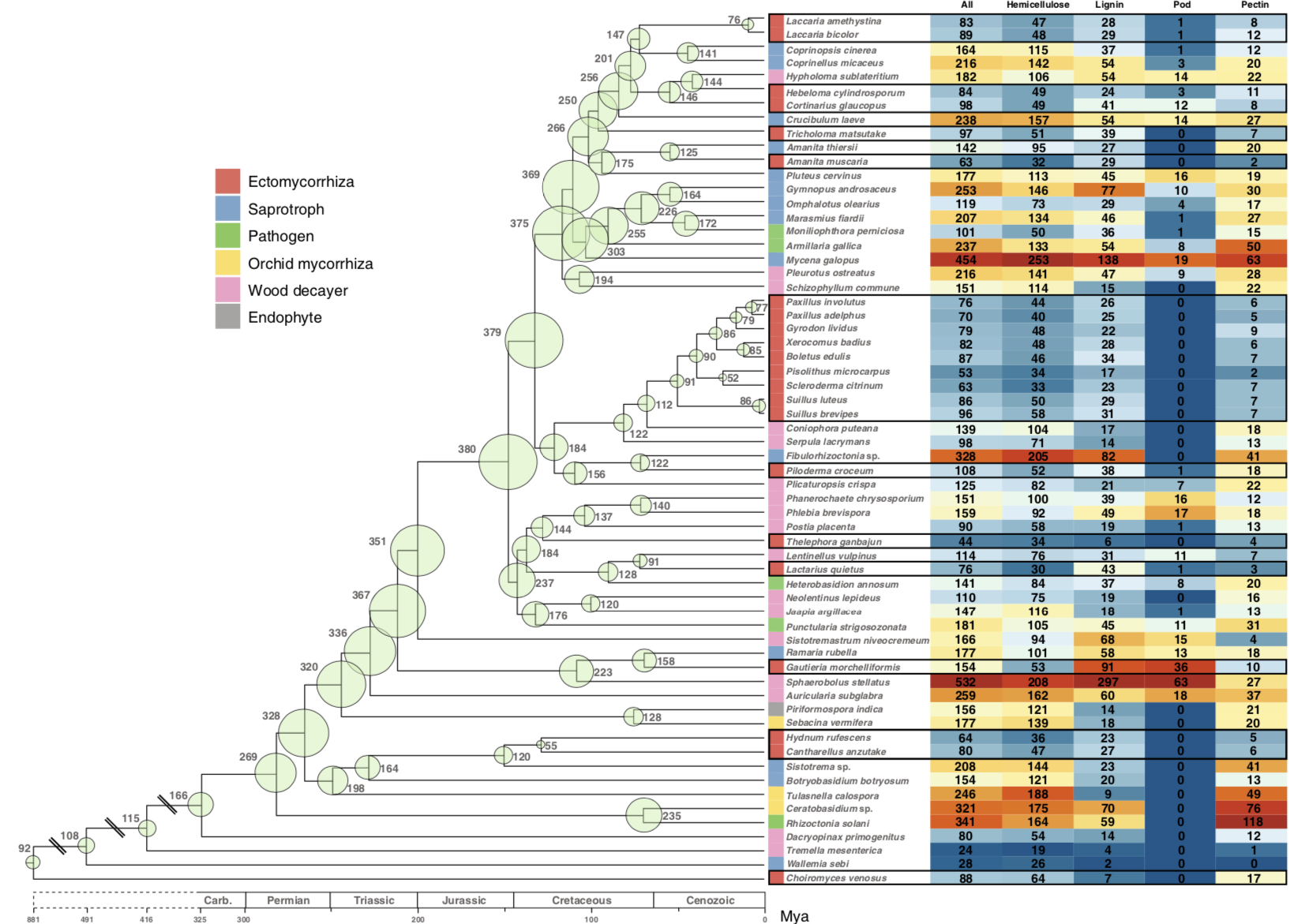2020. okt. 28. | News
The research group at the Biological Research Centre, led by László Nagy has studied for many years mycorrhizae, one of the symbiosis types between fungi and plants. This lifestyle characterised by root connections being beneficial for both participants. Mycorrhizal fungi have evolved many times during evolution, independently from each other (convergent evolution), but how they adapted to this behaviour is unexplored. The new article of the group, published in Nature Communications, answers this question, among other ones.

Evolutionary tree of mycorrhizal fungi
This publication, just online, is a continuation of the first large-scale genomic study on mycorrhizal fungi, presented in the Nature Genetics in 2015. A huge dataset containing 135 fungal genomes, collected by cooperative work between BRC Momentum Laboratory of Fungal Genomics and Evolution, the Joint Genome Institute (JGI, Igor Grigoriev), and INRA-Nancy guided by Francis Martin, provides a unique opportunity to examine the evolutionary background of the mycorrhizal lifestyle. The JGI completed the genome sequencing, László Nagy and Enikő Kiss (BRC) have examined plant cell walls degrading enzymes and the mechanisms of convergent evolution of the mycorrhizal lifestyle. They have investigated whether the genetic toolkit used by independent mycorrhizal fungal clades is different or similar to each other. They mentioned differences in the adopted gene-sets but these have already existed before mycorrhiza production, refusing the theory of evolutionary innovation. This finding was obtained by a bioinformatics approach, called phylostratigraphy, that is suitable for determining the evolutionary age of genes.
Transitions to the mycorrhizal symbiosis caused many changes in the fungal lifestyle. The studies showed that fungi express small secreted proteins in huge amounts but their functions are unknown. They might play a role in the communication with the plant partners. At the same time, mycorrhizal fungi have lost a significant part of the genes encoding plant cell wall degrading enzymes. Mycorrhizal species evolved from saprotrophic ancestors that contained genes coding plant cell wall degrading enzymes that are necessary for wood decomposition and for this reason they have an important role in biofuel research. The comparative genomics studies, on other hand, have shown surprising results. As we have beforehand assumed that mycorrhizal fungi have lost these enzymes completely, based on the new data, the group reported that many of the species retained different genes, among which presumably those responsible for wood and / or lignin degradation are also present. This completely new discovery suggests a contribution of mycorrhizal fungi to the decay of dead plant materials, this has been unknown for this group of fungi so far.
Further research aims to unravel the macro- and microevolutionary processes underlying the diversification of mycorrhizal fungi and to gain a more accurate view of the mechanism and functions of genes associated with symbiosis.